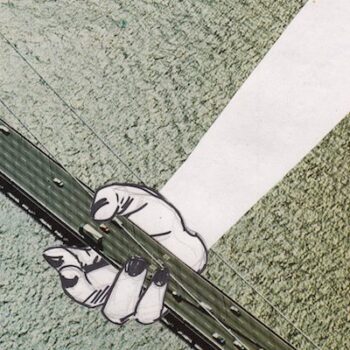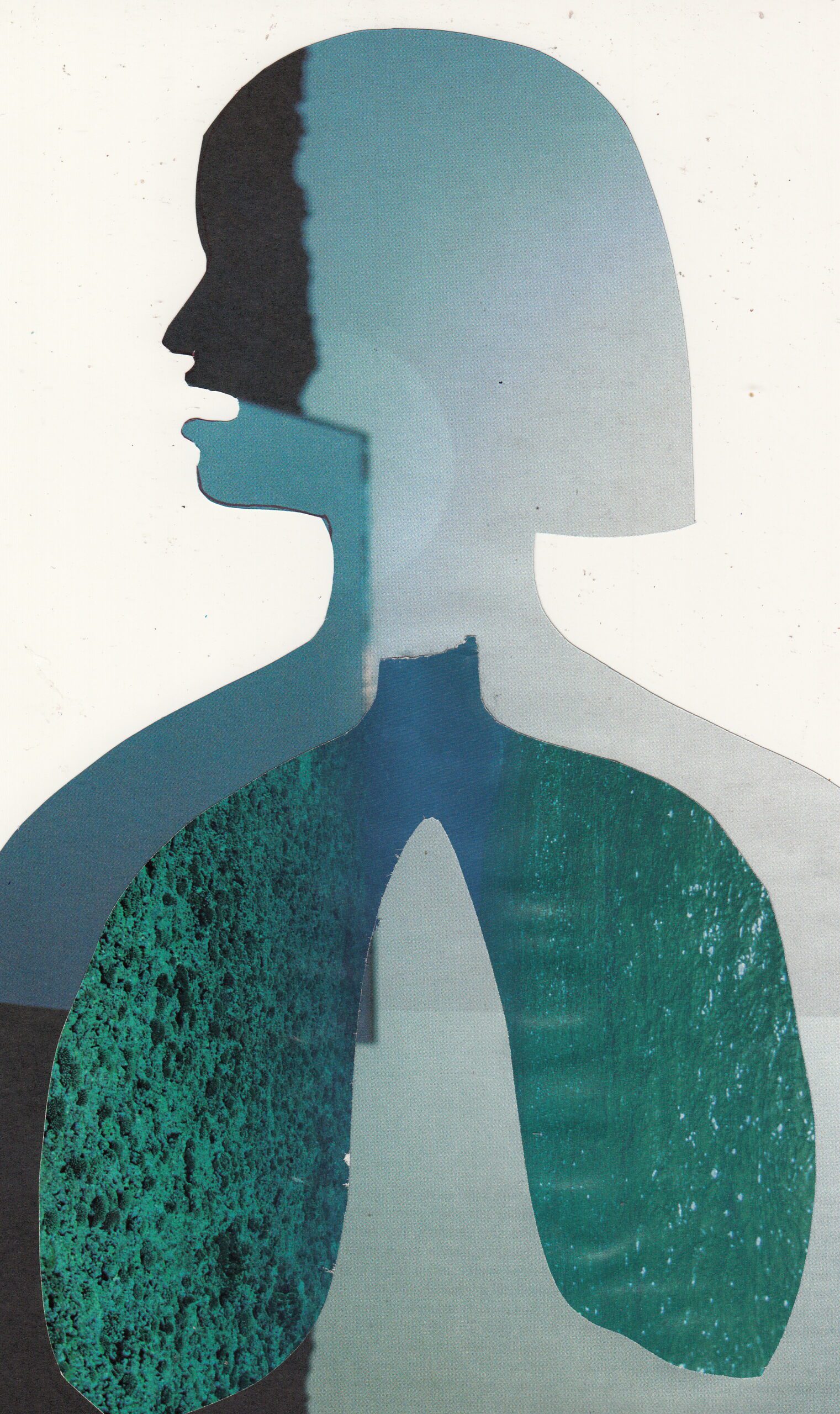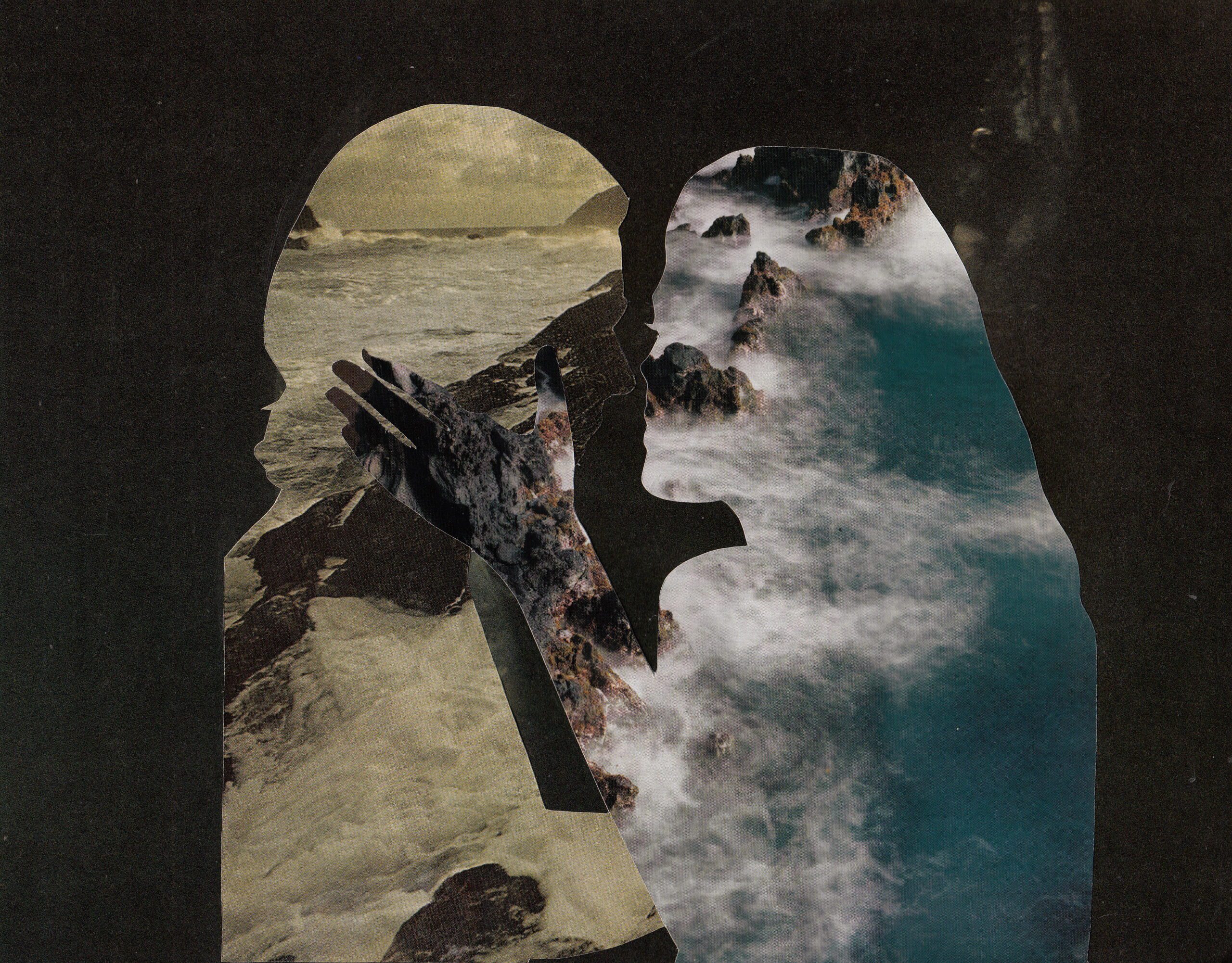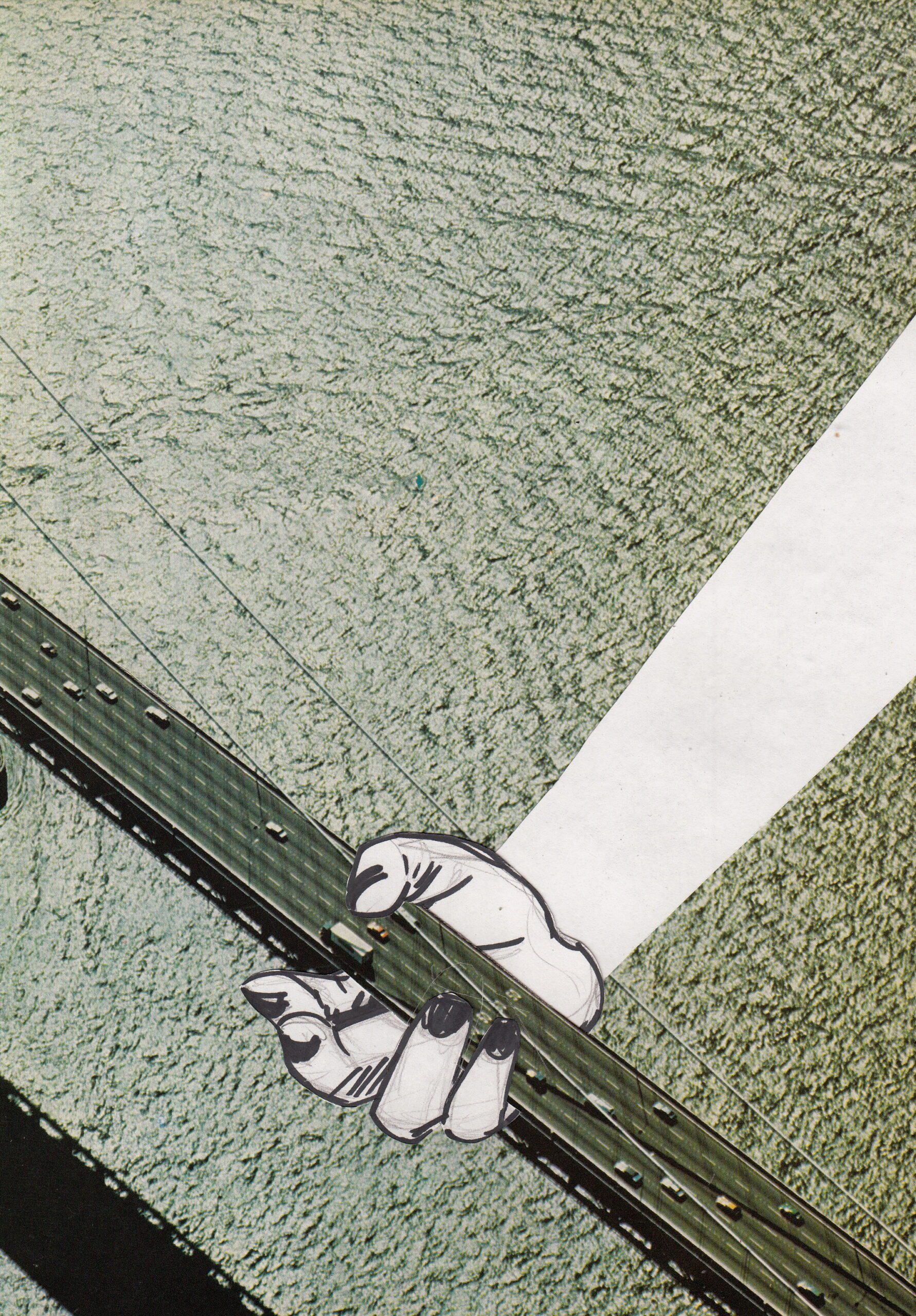
The Salish Sea is a wet lung breathing outside our balcony while my boyfriend Doug and I sleep. It inhales and exhales all night long, sucking seaweed into its salty windpipe, spitting crustaceans upon the shores of Galiano Island. Under the cloud cover of our duvet, I turn on my side and think about the critters scuttling around in my own alveoli.
Staphylococcus aureus. Pseudomonas aeruginosa. Names that could almost be pretty, like Shakespearean fairies from A Midsummer Nights’ Dream.
But these aren’t forest nymphs flitting from branch to branch in my bronchioles. They’re superbugs building a home where I breathe: I have a lung disease called cystic fibrosis.
*
Think of genetic illness as a story: it’s a twisted yarn whispered from ancestor to ancestor through the generations. Think of mutations in your DNA as page-length mispronunciations murmured into the ears of every cell you contain. As a result, the book of your body never quite makes sense—all because of one or two jumbled passages.
Here’s my story:
Once upon a time there was a girl whose cells didn’t quite know what to do with salt. Because of two genetic mutations to the cystic fibrosis transmembrane conductance regulator gene on human chromosome 7, her body couldn’t regulate sodium chloride properly. Most people’s mucous membranes are healthy salty rivers that wash away pollutants, but hers tended to get bogged down with bacteria and sticky mucous.
Still, she was lucky. Of her two genetic mutations, one was very wicked, but the other wasn’t quite so bad. That’s why she stayed fairly healthy throughout her childhood, teens, twenties, and early thirties. But on her thirty-sixth birthday, as though a beneficent spell was broken, she began to get frequent lung infections. Now, at forty-one, she takes antibiotics quite often and needs steroids to breathe.
People who don’t have cystic fibrosis naturally reabsorb the sodium chloride from their perspiration when they sweat. But on her body, it crystalizes like sea salt. That’s why any man who has ever licked her skin says she tastes like the ocean.
*
Humans are roughly sixty percent water. Maybe that’s why I feel in my element now, standing with Doug, under the wet-bellied clouds in Galiano’s Montague Harbour Marine Provincial Park, here in Canada. It’s sunset. The sky is purple; the sea is purple—even the empty varnish clam shells beneath our boots are varying shades of lavender and amethyst on the inside. It’s as though the wind painted the whole scene with one fat tube of color in different degrees of saturation.
Doug’s hand is warm and certain in mine as we crunch across decades of castaway shells.
 So much calcium, I think to myself, wishing that absorbing it were as easy as taking off my boots, parka, and jeans and rolling naked in the middens. My pancreas works well, unlike many people with more severe CF, but I still have a hard time absorbing vitamins and minerals, including calcium. My last bone scan indicated I had osteopenia, or early-stage osteoporosis.
So much calcium, I think to myself, wishing that absorbing it were as easy as taking off my boots, parka, and jeans and rolling naked in the middens. My pancreas works well, unlike many people with more severe CF, but I still have a hard time absorbing vitamins and minerals, including calcium. My last bone scan indicated I had osteopenia, or early-stage osteoporosis.
“Good air,” Doug says, filling his lungs.
I couldn’t agree more. I take a deep breath too.
It’s hard to believe that just a month ago I was choking on phlegm in my sleep, and he was rolling over to rub my back, without complaint.
There’s the kind of candy-glazed love that plays out between glamorous people on Hollywood movie screens, and then there’s what Doug does for me: cupping his hands and gently clapping them up and down the hull of my ribcage to loosen the congestion; and saying, “You look like a film noir starlet,” as I take a drag from my antibiotic inhaler and exhale a puff of powdered medicine into the boudoir.
Last month, January, I dodged a two-week IV treatment stint in the hospital—barely. Now it’s February and we’re gallivanting on Galiano. I don’t take these moments for granted. I’m filing each one carefully in the folds of my mind, like pages stolen from a book of fairy tales, to cherish later.
A few snapshots for the scrapbook in my mind’s eye: fir trees and cedar scrubbing the skyline like bottlebrushes; the wind’s salty kisses on my eyelids; the smell of bull kelp, seashells, and wet earth as we walk, regretfully, back to the car. Shadows are coming on.
There will be no happily ever after in my book—or in anyone’s, for that matter. There is only this moment: the purple lobes of the ocean breathing in and out as we roll down the windows and fill the sails of our lungs for the ride back to the inn. There is only now, this moment, over and over until nightfall.
*
I’m a total wuss. I don’t want anyone to put a PICC line in me. A PICC line is a long, thin tube that’s inserted in the arm, near the elbow, and threaded up through a large vein to rest above the right side of the heart. It’s how doctors get antibiotics into their CF patients when the pills and inhalation treatments stop working.
Although I’ve not yet had it done, many people who have more full-blown CF symptoms than I do have had PICC lines put in regularly all their lives, sometimes as early as when they were toddlers. Some of them are on their second double-lung transplant. These are the true CF soldiers, battling the disease on the front lines while I cower in the pup tent and complain about the hard ground.
When I think about the day when I will have my very first PICC line inserted, I feel like running. I know it’s irrational, but I just want to slip on some sneakers and go fast, like a Tasmanian devil cartoon, until my legs are a blur and I’m whirring above the treetops. I want to get in the car and gun it until I outrun the ticking time bomb that’s trailing me. But cystic fibrosis isn’t something you can outrun. And anyway, I live on Vancouver Island; wherever I drive, I’ll meet saltwater in the end.
I’m extremely grateful that I have a relatively mild version of CF, but I’d be lying if I said I didn’t grieve for my once-healthy lungs—and worry about the future. These emotions come and go. They’re not something you can measure out for yourself like water in plastic hospital cups. They’re oceans in their own right, endless and unpredictable, with their own mysterious tides.
Gratitude is the raft I use to chart the waters of this ongoing uncertainty. Sometimes, it’s smooth sailing. Other times, I grip the sides with white knuckles.
*
On a road near Montague Harbour, Doug and I find the restaurant we’ve read about in a magazine: a wood cabin strung with white lights and lanterns. Wisps of smoke rise from the chimney, joining acoustic music that slips out the back door to climb the trees.
Inside, we share a Galiano Island feast: a round of homemade sourdough with seaweed butter and tart juice from local plums, spiced olives with herbs and pine, chard with crispy duck skin and fermented winter squash. Fermented? This gives me pause.
With me, anything can be a landmine. I’m allergic to many things, including house dust, varying medicines, plants, animals, and sulphites in food. Perhaps I’m being neurotic about the squash dish, but it does happen that seemingly innocuous things turn against me. The most recent offender was a surprise: exercise.
Last year, I developed something called exercise-induced anaphylaxis. If I dance too hard or vinyasa too fast at yoga class, I get itchy red hives all over my neck and have to lie down for hours. These are the first stages of anaphylaxis, I learned, after the symptoms had been showing for months.
But exercise is important for my lungs, so I have to keep doing it—just not too vigorously. Here’s the new, delicate dance I’m learning: push yourself, but not too hard. Keep taking risks, but don’t venture too far afield. Be vigilant, but learn to let go.
Tonight, in this cozy restaurant, I can’t help but let my guard down a little. I take a tentative nibble of the fermented squash. It’s delicious and, to my relief, doesn’t make my throat constrict like foods with sulphites do.
Doug and I proceed to devour our chicken and braised greens like the ravenous beasts we really are under our street clothes. After sharing a pot de crème for dessert, we walk to the car, acoustic music from the restaurant trailing us in the dark.
I’m feeling triumphant, so I grab him for an impromptu hug-and-sway in the gravel parking lot. We’re celebrating as we dance—my sweetheart, me, the stars, the trees, the vast black night that swallows us.
*
Even when I’m out adventuring and feeling healthy, there’s a quiet battle going on inside me: bacteria trying to colonize in my lungs. I’m typically reminded of this in the moments just before sleep. I take a deep breath, and there it is: a little rumble at the bottom of my chest like far-off thunder before a storm.
Staphylococcus and Pseudomonas have embarked on a journey within me, venturing ever deeper into the tributaries of my pulmonary arteries and veins to set up their sticky little camps. Even as I type this, armies of Staph are pitching tents along the inlets of my lungs, feasting on the iron in my red blood cells.
When the colonies grow too large, my lungs fight back, throwing out heavy sheets of mucus to drown out the invaders. The only problem: they’re drowning me, too. So my doctors bring in the antibiotic troops, and then the real war begins.
Last year, I had three lung infection flare-ups that lasted about two months each. So, for about four to six months, I was taking antibiotics. With each flare-up, I need a little more medicine to put out the fires.
I wonder, will there come a time when the superbugs outsmart my medicine? And if so, will it be months, years, or decades from now? It’s the not knowing that makes my inner peace go AWOL.
But scientists have developed new pills that can tackle the invaders from a different direction. Rather than battling camps of bacteria, these drugs could give my body’s mucous membranes better resistance, so the colonies can’t form in the first place. The cost of this magic potion? $300,000 a year.
This seems like a hefty sum for a new medicine whose long-term effects are as yet unknown. And even if the drug company offers financial support, I’ll still feel like a cog in the wheel of a different war, one in which the Big Pharma giant pounds its meaty fist and fights for the right to hike prices on life-saving pills.
But here’s my war strategy: if my lung function dips and I start getting PICC lines put in, I will wave my white flag. I’ll try the new pills. That’s the bargain I’ve made with myself. That’s my plan of surrender.
*
As Doug and I wind down the road back to the Galiano Inn, it’s the blackest night I’ve seen. No street lamps here, just the waxing moon overhead, an empty clamshell tossed into the sky by a careless child.
Our headlights catch the eyes of a deer who stops chewing and stands alert. I recognize in this animal something deep inside myself, something elemental that’s made of muscle, sinew, and instinct, ready to bolt in a fraction of a second. It’s the part of me that remains ever vigilant to health risks, the part that’s maybe a bit paranoid, carrying wet wipes to avoid germs, panicking if Doug touches a dirty doorknob and then caresses my face. I worry he’ll lose patience with all this fretting.
 And then there are the other anxieties with their sharp hooves: what if, as my illness progresses, Doug winds up being my caregiver, or left alone? What if our love becomes a rusty trap clamped around his leg?
And then there are the other anxieties with their sharp hooves: what if, as my illness progresses, Doug winds up being my caregiver, or left alone? What if our love becomes a rusty trap clamped around his leg?
“I want this, wherever it takes us,” he reassured me the other day, taking my hands in his. “I want us.”
I wonder if he sees me as I truly am, or if he’s remembering the robust young woman I was a decade ago, when we first became friends. We’ve only been dating for a year, but so far, my CF hasn’t fazed him.
When we reach the Galiano Inn, we burrow deep into the blankets on our king-size bed. The faucets and fixtures in the bathroom are brass, and the room itself is a study in rustic luxury, but outside the wild island circles us with furry paws.
Last night the wind yowled at the glass doors trying to press inside. Tonight it harmonizes with the waves to croon a lullaby. Why, then, do I toss and turn?
There are shadow animals prowling in my center with their wet backs and slinky tails; things that nibble and gnaw, consuming me from the inside; anxiety, shame, and the sneaking suspicion that if I only tried harder I could be healthier. Existential angst rises to the surface of my mind like a harbor seal, then dives into the depths.
The wind picks up, licking at our door with a slippery tongue. I snuggle up against Doug, anchor myself in the harbor of his arms.
As I begin to drift off I wonder, what if I welcomed the things I fear? What if I welcomed the shadows pacing in my mind as the beasts of my own personal mythology, with something to teach me? What if I welcomed the PICC line as a possible boon waiting to help me down the road, when and if the time comes? What if I welcomed this disease itself as a complex part of my story—and, now, Doug’s—with hidden meanings for us both to decipher?
When morning comes, the light is golden, cleansing, redeeming.
*
I spend a lot of time at home when I’m sick; thank goodness I’m a writer, and my office is my laptop. Still, chronic illness can be a lonely business. I liken it to Alice in Wonderland tumbling down the rabbit hole. But in my case, the warren is a quiet apartment filled with books, Netflix episodes, and cartons of takeout soup.
I feel especially like Alice when I bounce back and join the world again. Walking down the street, my senses are heightened. Flowers are brighter, people and cars are louder. Smells—good and bad—are more intense. Bites of hot, fresh pastry are all the sweeter. Something as simple as a hike in the forest with a friend can move me to tears with its beauty. It could be that cystic fibrosis is teaching me to see the humdrum of daily life as something holy.
*
As Doug and I make our way back home, and our ferry travels from Galiano to Vancouver Island, I realize that transitions are my favorite part of any journey. There’s a freedom, floating suspended between where you’re coming from and where you think you ought to be.
I love the ferry ride. Sea lions bob in the waves like big brown logs, belly up. Otters sniff the air with their noses and slip under the surface before can I snap a picture. Seagulls and cormorants skim the ocean, supported by unseen currents.
There are houses along the shores of the Gulf Islands—little homes with steps that wander to the sea. From here on the ferry, they look like toothpick dwellings with staircases made of chicken bones; the sea could snap them in an instant if it wanted to.
 I think about how the ocean is strong. Over the years it’s shaped the landscape, giving the rocks grooves and lines and pockmarks, like the scars and wrinkles on our own bodies. The geological giants beneath the ocean are strong, too. When a small earthquake shook us in bed a few months ago, Doug held me close as two great tectonic plates shifted beneath the water, beneath the land, beneath my apartment. The Big One could come anytime, but we go on living our lives.
I think about how the ocean is strong. Over the years it’s shaped the landscape, giving the rocks grooves and lines and pockmarks, like the scars and wrinkles on our own bodies. The geological giants beneath the ocean are strong, too. When a small earthquake shook us in bed a few months ago, Doug held me close as two great tectonic plates shifted beneath the water, beneath the land, beneath my apartment. The Big One could come anytime, but we go on living our lives.
Doug and I have our own little earthquakes too, in this new love we’re building. We collide, buckle, and settle. We dig new foundations. We grow. I’ve built homes with other men before, only to see them swept away by tsunamis. But so far, this one seems to be holding fast. We go on.
It’s easy to get lost in the Southern Gulf Islands. There are so many twists and turns and land masses to navigate around. I’m glad the captain knows what he, or she, is doing. If only I could trust life the way I do this person I’ve never met.
Another thing I love about this part of the world: there are so many mountains. The great blue whales of the earth—Mount Baker, the Olympic Range, and others, empyreal giants basking in waves of sunlight, covered in barnacles of snow. Glimpsing them depends on the light, the clouds, the way the air conspires with the ocean to make mist.
Sometimes, thick clouds roll in like doubts, and the god-like giants are obscured to the point where I almost swear they never existed. Other days, there’s no questioning their presence.
There’s a lesson in all this, I think. It’s about learning to trust whatever it is that propels me through the wild, unpredictable landscape of my life. It’s about knowing that the salty ocean of blood beneath my skin will carry oxygen and nutrients to my cells until I come to know the meaning of my body’s story. Then, I will lie down and feed the earth.
It’s about understanding that deep within myself there has always been something large, luminous, and immovable—even when the clouds obscure it, even when I don’t believe it’s still there.
***
Rumpus original art by Briana Finegan.




